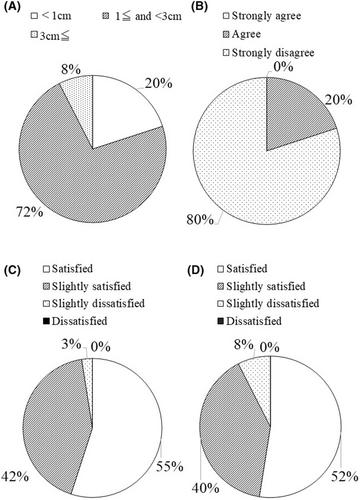Infantile umbilical hernia tape fixation method without compression materials
Abstract
Background
Compression therapy using compression material is often used for umbilical hernias in infants; however, there are problems regarding its use, such as appearance and cost. In our hospital, we use the tape fixation method without compression materials. We report the effectiveness of this method, its significance in measuring the degree of hernia bulge before treatment, and parent satisfaction with the treatment.
Methods
We analyzed 77 cases of umbilical hernias (41 boys and 36 girls, mean age 52.7 ± 18.3 days) that were treated with the tape fixation method at the Department of Pediatrics of our hospital. Hernia size was classified based on the height of the bulge: mild (<1 cm), moderate (1≦ and <3 cm), or severe (>3 cm). Treatment duration was compared between the groups using the Steel–Dwass test. After the treatment, a questionnaire was mailed to the parents to assess the treatment satisfaction.
Results
Seventy-three patients (94.8%) achieved closure of the hernia orifice, with no excess skin and a well-shaped umbilicus. The duration of treatment was significantly shorter, with the following order: mild (18.5 ± 8.2 days), moderate (25.0 ± 11.9 days), and severe cases (47.8 ± 11.7 days). According to the questionnaire, 97.5% of the parents were satisfied with the treatment.
Conclusions
Our tape fixation method without compression material achieved a high closure rate and a good shape of the umbilicus. In addition, we noted that the height of the hernia bulge can be used as a guide to estimate the duration of treatment.


 求助内容:
求助内容: 应助结果提醒方式:
应助结果提醒方式:


